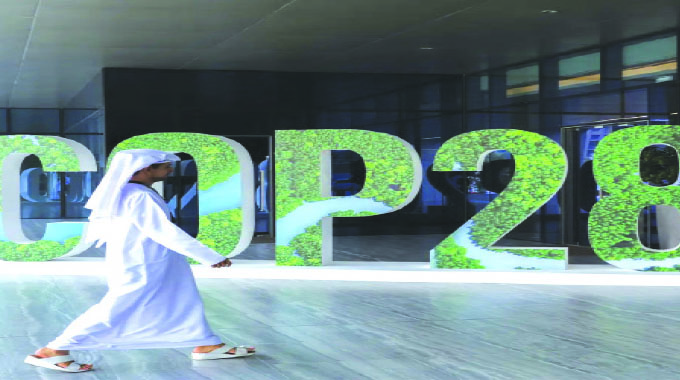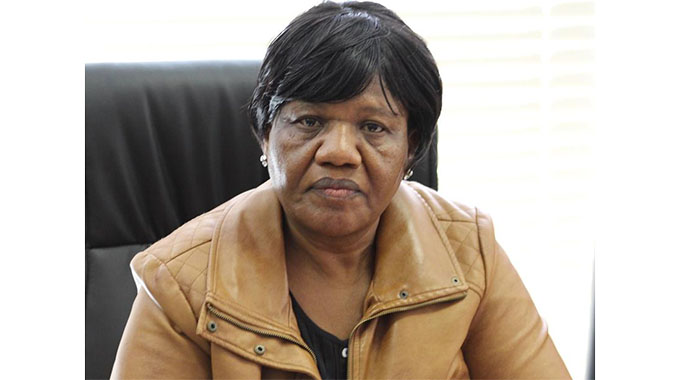EDITORIAL COMMENT: COP28 will be complex, we must be persistent, practical

COP28, the 28th conference of parties of the United Nations Framework Convention on Climate Change, opens in Dubai in the United Arab Emirates today and runs all the way to December 10 as nations and groups of nations battle to hammer out the necessary commitments to prevent climate change destroying our planet.
The scientific evidence is about as certain as it can get. We know fairly precisely how much we have to cut back on emissions of greenhouse gases, mainly carbon dioxide, to keep global warming within the target of 1,5 degrees Celsius.
We know the sort of money we need to pump into rectifying and compensating for the damage already caused; we know that technology change can minimise damage, but will require high levels of capital spending.
We as a planet have been making commitments for several years, but the follow up, the implementation of those commitments, has not followed at nearly the necessary rate, so things are getting worse instead of better.
Many of the concepts, commitments, and promises made at previous meetings of the parties are very good ideas and answer many of the needs. Where the problems arise is putting flesh and cash on these, to turn them into schemes that are implemented and funded.
Climate change cannot be fought or managed by a single set of policies. It requires a wide range of policies, programmes and sources of money to do what is needed, and often they fit together. It also requires everyone on Earth to work together to make it work.
So we have those policies, largely hammered at previous COP meetings and at major summits to cut carbon emissions.
These include deadlines for switching the world’s vehicle fleets over to electric vehicles, with the deadline being 2035 for the manufacture of the last internal combustion engine, which would mean by the 2040s most vehicles will be electric. Already some are trying to backtrack.
Zimbabwe is fine for the change. We are only now starting to plan for converting our new steel into vehicle manufacturing. The technology for body shells is the same. But we start licencing technology to build power plants, we can start smart and licence electric drive technology, rather than petrol engines and gear boxes.
There is pressure for a far higher percentage of the world’s energy, particularly electrical energy, to come from renewable sources, and this ties in quite a bit with the access to funding.
To take the Zimbabwean example, we need a lot more power stations. We have plenty of coal, we will probably have gas within a few years from Muzarabani, and we enjoy a lot of sunshine.
The problem with solar is that, along with the necessary storage for night use, the capital cost per megawatt is far greater than a coal station. So even though the fuel is free sunlight, the cost per unit generated will be higher because of the need to pay off capital borrowings or allow investors to make a fair profit. Pumping a lot of money in solar is a solution.
There are those who want to ban new coal mining or expansion of coal thermal stations. Well that ban can be implemented, so long as countries that do need to expand their electricity output by serious amounts can use their renewable resources, and that means can find the money to use their renewables of solar, wind, tides or hydro.
We have the loss and damage fund. The technical experts have done a lot of work. The bulk of the fund must come from those who pumped most of the extra carbon into the atmosphere, the developed countries, and much of the fund must be used to help those who suffer the most even though they cause so little of the damage, the developing countries.
To look again at Zimbabwe. The main loss and damage climate change is bringing to us is a generally warmer and drier country, with more extremes of weather, so rainfall is more bunched, and more likelihood of severe cyclones.
We are spending our own money on combating these changes, building a new major dam roughly every year, upgrading irrigation, and putting in place better disaster measures to cope with the extra cyclones and worsening climate.
But equally obviously we could do this work twice as quickly with twice as much money. This is one of those problems where throwing money at it is the correct solution.
The money can be backed by more sensible farming policies, more active involvement of communities in responding to disasters, such as the rapid early warning system now in place for cyclones, and better technology, so that more land can be irrigated for the same amount on water. But we need to start with the dams and water.
It is a race we are running, as to whether we can build the necessary infrastructure fast enough to compensate for the declining climate.
It does not really matter whether the extra funding comes from the loss and damage fund or comes from the capital development investment fund, and we could probably tap both, but it does need money in those funds.
We can build our case by pushing on with our own investments paid for by our taxpayers, but then showing how urgent is the extra cash on top of that.
At the same time we need to make our contribution to the world. Some of this comes from the way we develop, which means access to investment funding to manufacture electric cars and base the bulk of our power requirements on solar as hydro becomes a bit tighter with lower Zambezi basin rainfall.
So if we have the plans we have a good case for getting the extra cash required, say the gap between the cost of a coal station and the cost of a solar station and battery park with the same output.
This requires some tight and precise costing, but it will show how much we can be expected to pay and how much we need from other sources. We can push our forest protection, afforestation and reafforestation programmes so we lock up increasing amounts of carbon into trees.
Fortunately orange trees, mango trees, baobabs and marula trees lock up just as much carbon as any other tree, so we can go for the double in more food and more carbon locked.
All this range of programmes and range of needs means that our team at COP28 has to be ready with the data, has to work hard with the African bloc since so many of our problems are the same, and has to continually emphasise the practicality of our proposals, the percentage our taxpayers and businesses must be prepared to pay, and the extra required from the special funds.











Comments